

Perspectives
By Capt. E. Gerardo da Costa Duarte
Entertaining complacent Canadians with important
information, serves no purpose.
Certainly, lessons ascertained from the Canadian marine industry perplexes the
mind into a world of intellectual inferiority, where the majority of Canadians
show no interest to establish a positive work ethic. Narrating endless episodes
of determined efforts to put an end to the Canadian marine industry by
Government, marine workers and unions will not contribute to future growth of
such, obviously.
My early analysis of the prospects at beginning a marine
career within Canada, showed that it had limited opportunities. And, the
realization that the world possessed a greater pool of knowledge than the narrow
minded Canadian institutions. Additionally and to my surprise, my
disappointments within Canada, provided excellent incentives to travel elsewhere
seeking better opportunities; a mannerism that always resulted in major
accomplishments. While Canadians are currently suffering from a failed marine
industry, I reflect on my past with pride and assurance that it was not a waste
of my time.
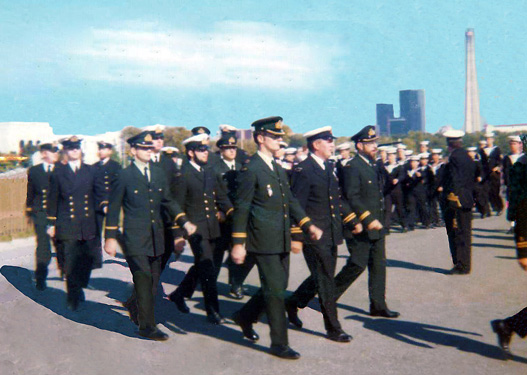
Should Canadians insinuate that I did not contribute to
a mind change for the betterment of the Canadian marine industry, they are
wrong. My continuous contributions,
proved to be an exercise in futility; a society does not change by words or
actions of an individual, instead it changes when suffering begins. Today, the
loss of the marine industry has not contributed to great suffering of the
population, Canadians enjoy a modest living, albeit a deteriorating one.
Yet, it has contributed to a loss of pride, with consequences of a
dependency on others that do not have Canada's best interests in mind.
To accentuate the above, I will relate a conversation
with the head of a shipbulding
consortium, established to build large size vessels for the government. Because
the conversation was of a private nature, I will refrain from publishing names
and specifics of the shipbuilding project. The said conversation, took place
upon the completion of the project, where I brought up the overall cost for the
vessels and the fact that the consortium members were over paid for the product
they produced.
Specifically, a price tag that exceeded nations with
global competitive issues such as our neighbour, the United States of America.
His answer, to my surprise, was swift and factual providing specifics of the
money flow, from minister's name to deposited cheques and emphasizing that he
complained to the minister that the monies awarded surpassed the project's
costs. Much to my shock, he offered to give the financial excess back to the
government, the minister refused the money requesting that he keep it. I
concluded the conversation by thanking him for his honesty.
A few months later, while reading a Canadian yachting
magazine, my honest shipbuilder purchased a beautiful large yacht. From
experience, Canadian taxpayers are adept to government financial waste, a
symptom of ignorance, incompetence and stupidity.
My collection of past practices employed to correct a
Canadian wrong serves no purpose today, when it is common knowledge that the
average Canadian cannot handle truth, worse, they cannot handle factual
information indicating culprit's methodologies at ending the Canadian marine
industry. Complacency can be blamed, yet finding excuses solves nothing when
determination persists to do nothing, opposed to doing something constructive.
The Canadian marine industry is a large subject, where
my past participation involved numerous events resulting in a collection of
materials worth publishing. Unfortunately, with segments of privacy concerns and
the fact that a lot of information was destroyed, demonstrating my lack of
interest to pursue it further, I will only publish material that has remained in
my procession and selected for future destruction.
Obviously, anyone wanting more, given the
power of the internet, information about the Canadian marine industry is in
abundance.
Sometime in July 1993, I drafted a letter outlining
various aspects of the Canadian marine industry gone wrong. The letter was
addressed to the Canadian Prime Minister, the Honourable Kim Campbell.
Subsequently, the letter received support from Mr. G. MacPherson, president of
the Marine Workers' & Boilermakers' Industrial Union, where his concerns were
added. The final draft was completed, July 21, 1993 and sent under the Union's
letter head bearing both our signatures.
The said letter is self- explanatory and is available
below in .pdf format. Simply click on the image below to review its contents.
During the early nineties, various forms of
communication took place engaging members of the Canadian marine industry with
an interest to chart a better route. Unfortunately, the best of verbal
engagements took place in private with no written word available. Needless to
say, a clear picture of the Canadian mindset made me realize how determined the
powers at hand were to destroy such an industry. Realizing that I alone could
not reverse the trend to downsize the Canadian marine industry to that of hardly
an existence, again I travelled elsewhere seeking better opportunities.
Simply click on the image below to review various government
correspondence.
During my absence from Canadian shores, the plight to
improve the Canadian marine industry continued, unfortunately with no positive
results. Below are excerpts from a presentation given by the President of the
Shipbuilding Association of Canada in December 1999.
"Shipbuilding jobs in Canada produce an average
sectoral wage that is 33% more than the Canadian norm. On average, 80% of the
construction fee paid to a shipbuilder stays in Canada".
"Another important reason for maintaining a Canadian
shipbuilding industry is that the perishable high-technology skills associated
with modern ship construction will remain and continue to grow in Canada. Loss
of these skills also has serious repercussions for the maritime defence of
Canada".
"In the maritime nation called Canada there is a role
for the Canadian shipbuilding industry but in order for it to survive it must
have access to the world`s markets. As the 21st century unfolds, Canada will
still have the need of ships".
"Sir Robert Atkinson, former chairman of British
shipbuilding has recently presented a paper on the demise of the British
shipbuilding which in the last 50 years has seen its market share go from 40% to
less than 1.4%. His key point was that, without government support, shipbuilding
cannot survive in any country. Shipbuilding is a political issue pure and
simple. That, in a nutshell, is why Canada needs a shipbuilding policy too".
Vice Admiral Peter W. Cairns RCN (Ret`d), President,
Shipbuilding Association of Canada, December 1999.

In 2002, the Provincial Law Courts of British
Columbia adopted the following statement of principals:
“As an independent judiciary, the Provincial Court of
British Columbia is committed above all to upholding the Rule of Law and the
Constitution of Canada. We aspire to be fair, impartial, compassionate and
patient in a knowledgeable and consistent application of the law to all persons,
with due regard to each person’s circumstances. We strive in serving the
communities of BC to provide reasonable and equal access to justice for all
persons through traditional and innovative processes which, to the extent
permitted by law and our resources, are practical, speedy, inexpensive, and
simple”.
To call the above statement trash, would constitute
praise for an institution that dismisses its most important mandate; “to uphold
the Rule of Law”. Unfortunately, the trashy aspect of law practice in the
Province of British Columbia carries through to the Federal level with
statements originating from both, the Prime Minister of Canada and Transport
Canada Ministry, affirming their lack of interest to apply the Rule of Law.
The El Conquistador story does not begin with criminal
activity on the part of the owner, instead a victim of Canadian society that
allows an abandoned and dilapidated deep sea tug built in Montreal, Province of
Quebec, Canada, by Canadian Vickers, in 1938, to be sold to an individual with
no marine experience allowing him to purchase a ship that Canadian authorities
should have seized years earlier as a danger to the safety of the public and the
environment.
The paragraphs that follow delivers a story of
embarrassment and dishonor to maritime Canada. Because it involves various
segments of incompetent and stupid Canadian Governance, it is a story worth
telling. Unfortunately, I was picked as the central figure, much to my dislike.
Specifically, I was charged with a crime that I did not
commit nor did anyone else. Actually, the
thrust of my involvement was to prevent a crime of falsifying a ship document
and the operation of an unseaworthy vessel. And, to bring past events to the
comical stage; yes, my client, Mr. Shon Nickel, the above-mentioned "victim", had an interest to falsify his
vessel's documents for the purpose of seeking Venezuelan registry, fortunately,
to end his criminal pursuit, I told his wife and she put a stop to his proposed
criminal career.
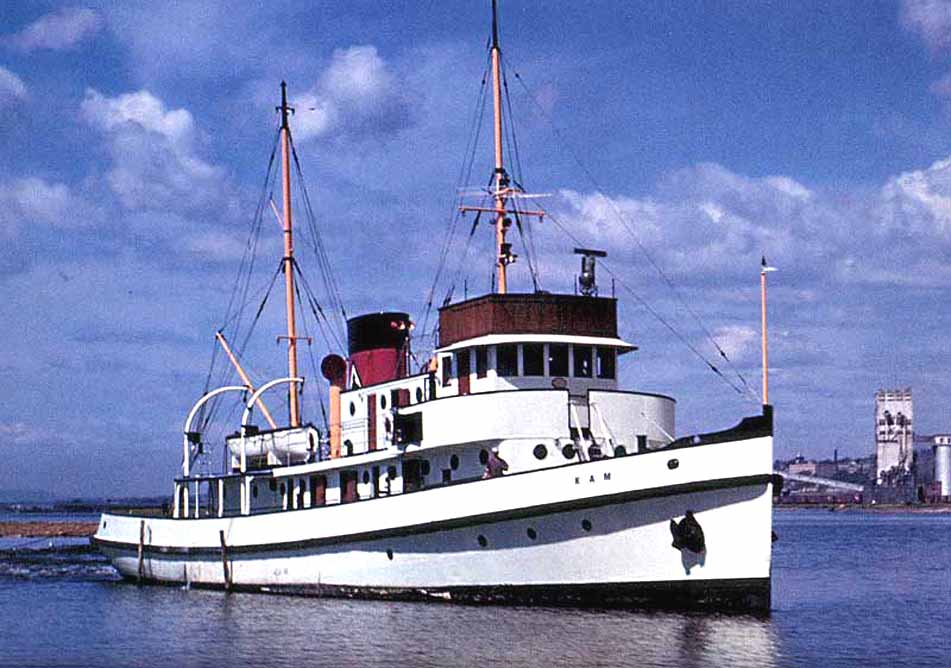
Today, serious questions remain unanswered:
1.
Why, was I charged with
falsifying a ship document two years after the events took place, allowing for
the El Conquistador to depart Canada in an unseaworthy condition bound for the
United States of America where it remains detained by U.S. authorities, to this
day?
2.
Why, the Canadian
authorities failed to detain the El Conquistador within Canadian waters
displaying an obvious unseaworthy condition?
3.
Why, the Criminal
Courts for the Province of British Columbia refused to hear evidence against
Sergeant M. G. Peers, member of the Royal Canadian Mounted Police?
Click to review .pdf
Form 2.
4.
Why, was the vessel El
Conquistador, previously registered under the name Gulf Ivy yet sailing under
the unregistered name Swiftsure X within Canadian and U.S. waters?
5.
Why, was my call to Mr. John Yeung, Transport Canada, Marine Safety, to inquire about Port Control and whether they
monitored the Port for substandard
vessels, namely the movements of the ex-Gulf Ivy a Stateless vessel
navigating on Canadian waters, Ignored?
6.
Why, my stability
booklet produced after inclining the El Conquistador disappeared, where only a
few page copies exist, the first page bears an official Transport Canada Stamp
beside a false stamp?
7.
Why,
evidence shows that Transport Canada officials were the only ones in possession
of copies and originals, making it almost impossible for anyone else to create
such forgeries without their assistance?
8.
Why, was I charged with one count of forgery, when no one else was charged,
given that the original documents showing a false stamp were never in my
possession?
9.
Why, Canadian witnesses
that inspected the M/V El Conquistador determined the vessel to be in an unsafe
condition prior to departure from North Vancouver, BC., yet, Judge Challenger,
Judge Angelomatis and Judge Steinberg refused to issue subpoenas to hear these
witnesses and refused to hear evidence submitted by the United States Coast
Guard and Homeland Security?
10.Why, two witness subpoenas
received Judge’s approval yet the above-mentioned judges refused to hear
evidence?
I met Mr. Shon Nickel (U.S. citizen) sometime in August 2001, while grocery
shopping in Queensbourough, BC. At the conclusion of
an introductory exchange of information, Mr. Nickel asked me to board his
vessel, moored at Mr. Ron Francis, Marina also located in
Queensborough. While onboard Mr. Nickel’s vessel, the
ex-Tam, ex-Gulf Ivy, built in 1938 and
removed from Canadian registry on January 24, 2000, Mr. Nickel requested
that I provide solutions relating to the vessel’s registry, certification,
stability, and construction standards. Given my professional qualifications and
extensive knowledge on Naval Architecture and Vessel Registry, It did not take
long for my assessment of the vessel’s condition recommending the following:
1.
Mr. Nickel to become aware of all regulations, both Canadian and International
governing the operation, construction, and registry of sea going passenger
vessels.
2.
The vessel was not registered. As per Transport Canada, vessel registry office
in Vancouver, the Gulf Ivy (O.N.
0170259) no longer registered in Canada, date of closing: January 24, 2000,
that Mr. Nickel register the vessel immediately, either back to Canadian
Registry or to seek a new State-Flag to register his vessel.
See Canada Shipping Act, 2001, Vessel
Registry.
3.
Additions to the superstructure were built with no regard to structural rules.
No approved plan drawings showing details and calculations of work, before the
modifications. Mr. Nickel had absolutely no concept as to the structural loads
imposed on the original superstructure of his vessel. Recommended an immediate
structural analysis, together with longitudinal strength calculations showing
whether the additional structure and cement placed inside the forward ballast
tanks to be a safe additional load on his vessel’s original hull structure.
4.
Given the amount of new additional superstructure to the vessel, it was
recommended an immediate detail stability study to prevent a possible capsizing
accident.
Soon after the above-mentioned onboard meeting, I contacted Transport Canada, Vessel Registry, to confirm the status of the vessel. Confirmed by Ms. K. O. McEllwain, the ex-Gulf Ivy, was no longer registered in Canada, date of closing: January 24, 2000. Therefore, an unregistered vessel within Canadian jurisdiction. See Canada Shipping Act for offence and penalties.
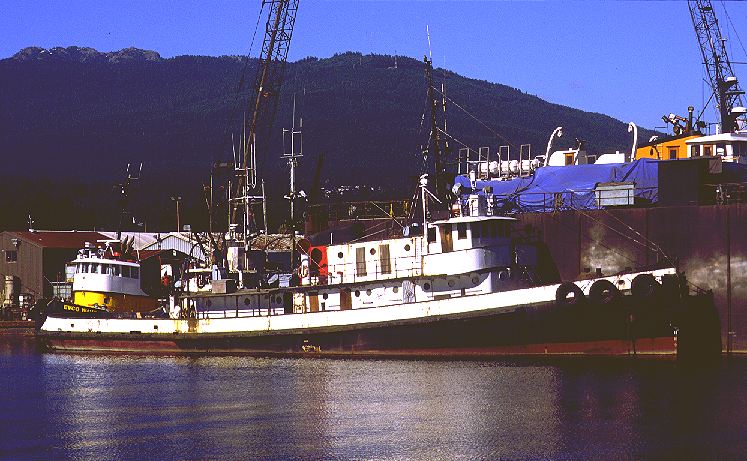
On
behalf of The vessel’s owner, Mr. Shon Nickel, I maintained contact with Ms.
McEllwain, Senior Registrar, Transport Canada, negotiating a way to get the
Vessel back into Canadian Registry. During these early conversations with Ms.
McEllwain, I learned the status of the M/V Gulf Ivy regarding a non-existing
name Swiftsure X in the Registry. A clear indication the certificates found
onboard with the name Swiftsure X, were falsified by Transport Canada. Later,
this information played a part in the my mindset, following threats originating
from Mr. Shon Nickel, allowing for information given to Mr. Shon Nickel for his
falsification of ship documents produced to convince Venezuelan Authorities to
register the Swiftsure X and re-naming it El Conquistador. Obviously, any
State-Flag, such as Venezuela, inquiring about a vessel named Swiftsure X would
find the vessel non-existent. This method worked, the vessel was not registered
in Venezuela. Also, the fact that I called Mr. Shon Nickel's wife telling her
about her husband's intent to produce false
documents, she immediately put a stop to his proposed criminal career.
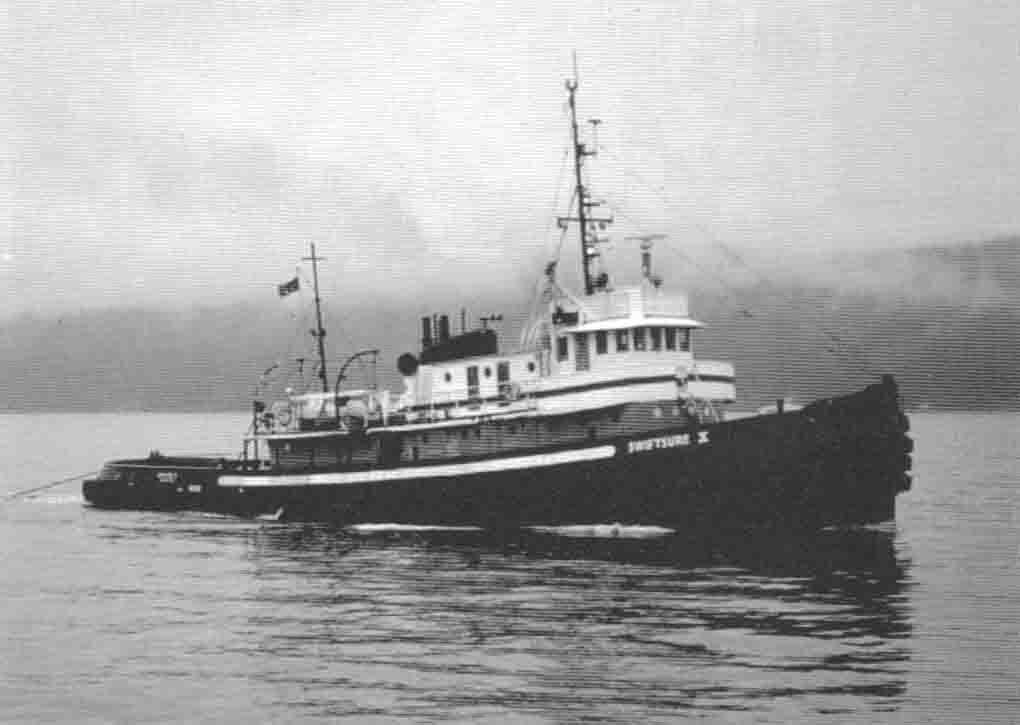
On
September 12, 2001, the
above-mentioned vessel departed Mr. Ron Francis, Marina, bound for Allied
Shipyard, North Vancouver, under its own power. The Captain and Chief Engineer
were Canadian Certified mariners. Namely, Ms. Barbara Howe, captain and Mr.
Louis De Graaf, chief engineer.
Specifically, Ms.
Barbara Howe, captain of the vessel O.N. 170259, Canadian certified and marine
instructor, member of a Vancouver Marine College, took command of a stateless
vessel when the first duty of a Canadian certified master is to check a vessel’s
registry status and refuse command when in a stateless condition. Violation of
the Canada Shipping Act, 2001.
Under the command of Captain Howe, the vessel sailed from the Fraser River Port Authority to the Vancouver Port Authority, unregistered, flying a large Venezuelan flag while the vessel was not registered in Venezuela, no life saving equipment, poor stability, hull flooding from around the perforated sea chests, fire mains not working, and the engine telegraph not working. The engine telegraph failure resulted in a collision with the departure dock. The collision caused extensive damage to Mr. Ron Francis property resulting in a civil case. Before these sailing events, Transport Canada, Ship Registry, was well aware the vessel was not registered. Further, the Captain and the Chief Engineer were well aware the vessel was not fit to depart. To be specific, the vessel was not fit to be in the water, when one considers the hull condition.
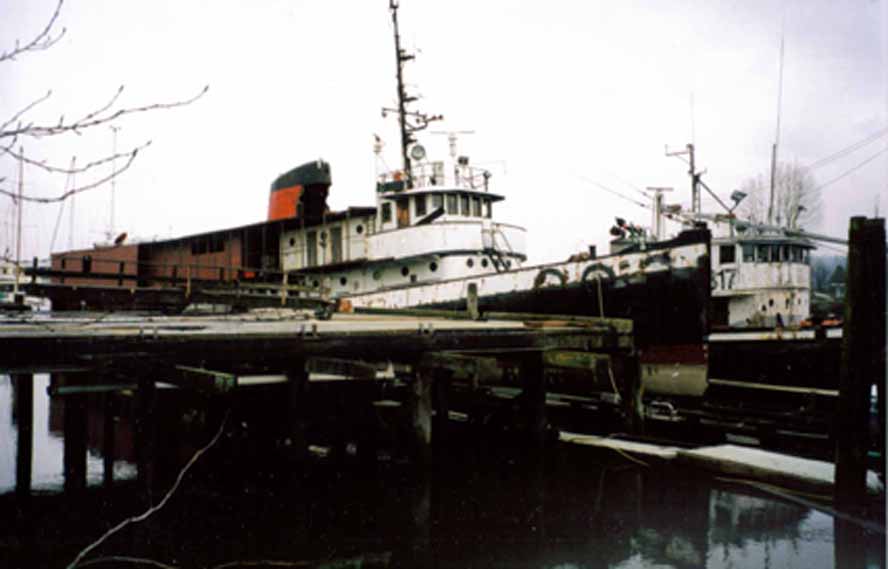
On
September 15, 2001,
after the vessel’s arrival at Allied
Shipyard, North Vancouver, I contacted Mr. John Yeung, Transport Canada, Marine
Safety, to inquire about Port Control and whether they
monitored the Port for substandard
vessels, namely the movements of the ex-Gulf Ivy a Stateless vessel
navigating on Canadian waters. Mr. Yeung gave me assurance that all was under control.
During November and December 2001,
I was contacted by Mr. Nickel requesting condition surveys of his vessel. Two
surveys took place onboard the ex-Gulf Ivy, El Conquistador, one in November,
one in December 2001. Before the surveys, in a meeting with Mr. Nickel and his
wife I strongly recommended a stability study of the vessel to be addressed
first. It made no sense to continue adding equipment and structure to a vessel
that might already have serious stability related problems. Mr. Nickel agreed to
have the stability of his vessel checked. Following the collection of relevant
data an inclining test took place at a later date.
Prior to the inclining test a meeting took place onboard
Mr. Nickel’s vessel. This time I decided that enough conversation had taken
place prior to the meeting and it was about time Mr. Nickel understood the
vessel was not fit to receive any certificates from any regulatory body.
Further, I did not understand the lack of action from the Canadian Authorities
given that the vessel remained out of registry and in an unseaworthy condition.
Mr. Nickel’s reply relating to Canadian Authorities was simple: “Canadians are
stupid”. Also, I questioned the wisdom of Mr. Nickel’s legal advisers by
maintaining the vessel out of registry. Following this meeting I requested
to withdraw my services. This resulted in a barrage of in-person and phone
threats from both Mr. Nickel and his wife. Sometime during this feud, I
contacted Mr. Jim McLaren, Allied Shipyard manager and owner, to
inform him of my decision to withdraw my services and not proceed to incline the
vessel and create a stability booklet.
My decision to withdraw services agitated Mr. Macleran. For safety reasons he worried about the stability condition of the vessel El Conquistador (ex-Gulf Ivy) and was quite interested to know the inclining results. After a number of emails, phone conversations, etc. involving Mr. Nickel, his wife, Mr. Jim MacLaren and I, it was decided, for professional and safety reasons, to proceed with an inclining test and produce a stability booklet. At the time, I was very clear about the scope of work and submitted my invoices relating to the work previously completed and all the visits to the vessel. Further, the invoice referring to the onboard visits stated the main reasons the vessel would not pass any Classification Society or State-Flag inspections.
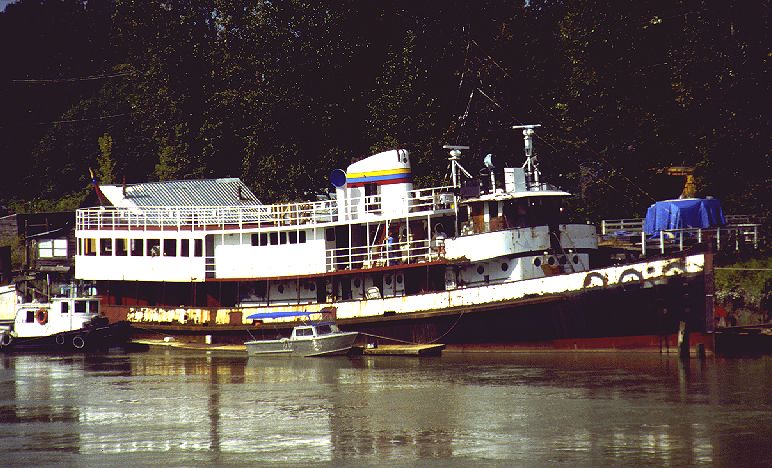
Mid to late Spring 2002 and again prior to the inclining test,
Mr. Nickel asked me to inspect the vessel once again. Mr. Nickel requested this
inspection because the vessel was in dry-dock for hull inspection. Once again, I
reminded Mr. Nickel that the stability was the only issue that I would deal
with. Yet, given past uncompleted visits to survey the vessel, I decided to
inspect the hull to satisfy myself that my past conclusions were correct
regarding the overall condition of the vessel.
Upon arrival, it
became very clear to me that the vessel was dry-docked for other reasons than
just a hull inspection and paint job. To begin with, the hull was undergoing
plate removal, welding, and plate inserts. To make a long story short, the
vessel was sinking and they had to lift her out of the water to perform
emergency repairs. My findings matched past ones: the vessel was not fit to be
in the water. I recommended the hull to be ultra-sonic tested.
For a vessel of this age (built in
1938), Canada Shipping Act
Regulations require the hull be drilled for accurate hull thickness measurements
and only begin repairs after evaluation of the whole hull. Repairing the
holes would not solve the overall condition of the hull for sea worthiness.
Visually the hull showed areas with very thin metal near perforation.
Specifically, the
period above-stated, Mid to Late Spring 2002, showed a vessel deprived of basic
structure required to maintain a load surpassing its maximum designed water
line.
My authorized quest to determine a means clarifying to Mr. Shon Nickel that his
wishes were leading him to a dangerous condition for his vessel, were in vain.
The ex-Gulf Ivy O. N. 170259 displayed a hull with its collision bulkhead
severely perforated, the stern bulkhead half removed, stern ballast tanks
structure removed, forward tank tops removed, scantlings water line submerged,
hull showing severe corrosion within its mid body near the sea chests, additions
to its superstructure surpassing a safe level for the type of vessel it was
designed and approximately 100 tons of solid ballast added to prevent a
capsizing. Clearly, endangering the safety of the ex-Gulf Ivy. Canadian Criminal
Code, Section 87.1.
Prior to the inclining experiment tensions were running high:
Mr.
Nickel was becoming impatient with most people contracted to provide a service
or a product to the vessel. Legal battles arising against Mr. Nickel: the dock
collision civil suit, a lien on the vessel for unpaid bills, window manufacture
wanted to withdraw his services and products, the chief engineer, Mr. De Graaf,
continuous questions about the vessel’s safety. I did not want to provide or assist Mr. Nickel to obtain
seaworthiness certification, on behalf of Honduras or Panama authority. Mr.
Nickel was beginning to realize that the vessel’s overall seaworthiness
condition was not what he understood at the time of purchase. In other words,
the best route for this vessel was the junkyard. Built in 1938, hull in bad
condition, newly built superstructure; that would not pass International
Regulations for a passenger vessel, wrong subdivision for a passenger vessel,
and possible stability problems.
After dry-docking,
the vessel returned to the water and I subsequently produced the
stability study booklet.
The
Inclining Experiment went well and Mr. Nickel, once again, received information
that the stability was produce without State-Flag or Classification Society
witness. Therefore, the best it would provide was a check on the vessel’s
overall stability condition.
Unfortunately, the stability did
not produce the results Mr. Nickel expected. The vessel, at the time of the
incline had its fuel tanks fully loaded together with the aft ballast tanks also
fully loaded. This condition produced a favourable stability condition at the
time of inclining. Not the same when different conditions were generated and
analyzed. Reminding Mr. Nickel that his vessel was upright given the 100 tons of
steel and cement added to the bottom of the vessel and that the previously
mentioned tanks were fully loaded. The practice of adding cement to older
vessels follows a condition where ballast tank tops are removed to accommodate
the cement, thus weakening its structure. This method endangers the safety of
the vessel as it compromises the vessel's structural integrity.
Mr. Nickel reacted by issuing threats against my life, resulting in
repeating my past statements; absolutely no modifications to the booklet,
especially when potential loss of life is a possibility.
Following
the creation of the stability booklet Mr. Nickel made a variety of visits to my
office, to vent his frustration and to persuade/threaten me to change my mind
about the stability booklet’s stated warnings. The issue of acquiring
certificates to please the Venezuelan authorities and obtain Venezuelan registry
was top priority in Mr. Nickel’s mind.
The above-mentioned issue reached a peak when Mr.
Nickel took a copy of a section of a drawing from my desk showing Transport
Canada approval stamps. The drawing, belonging to another client of mine, was of
interest to Mr. Nickel because he decided to alter certificates issued to his
vessel 26 years ago. The reasoning behind Mr. Nickel’s motives generated from
conversations with his lawyers in New Orleans representing Mr. Nickel to the
Venezuelan Authorities. Mr. Nickel insisted that the Venezuelan Authorities
would accept anything his lawyers gave them and register the vessel. I repeated
conversations about the difficulty of registering the vessel with the Venezuelan
Authorities suggested the vessel go back to the Canadian registry under a
pleasure craft status. Once again, I contacted Ms. K. McEllwain
to find out about the procedures governing registry of a vessel owned by a
foreigner to Canada. All the information that I collected was passed on to Mr.
Nickel while he rejected this venue. Mr. Nickel was only interested in having
his vessel registered with the Venezuelan Authorities mainly because both Mr.
Nickel and his wife had property in Venezuela.
Again, as
previously mentioned, I called Mr. Shon
Nickel's wife telling her about her husband's intent to produce false
documents, she immediately put a stop to his proposed criminal career.
Therefore, sometime towards the end Summer 2002, I expected the whole ordeal
involving the Vessel El Conquistador to end with the vessel detained by
Transport Canada and the RCMP.
The events involving the vessel renamed El Conquistador, herein described, reflect approximately TWO THOUSAND pieces of paper, exhibiting; letters, faxes, documents, certificates, court applications, ship drawings, court transcripts, and stability data. In Addition, approximately TWELVE HOURS of recorded interviews with witnesses and graphic information released from United States of America, Homeland Security, all add testimony to the severity of neglect and criminal activity displayed by Canadian Government officials, namely a member of the RCMP, Sgt. Mark G. Peers and five officials of Transport Canada, James Lawson, Brian Kenefick, Colin Currivan, David Motion and Goeff Sedan.
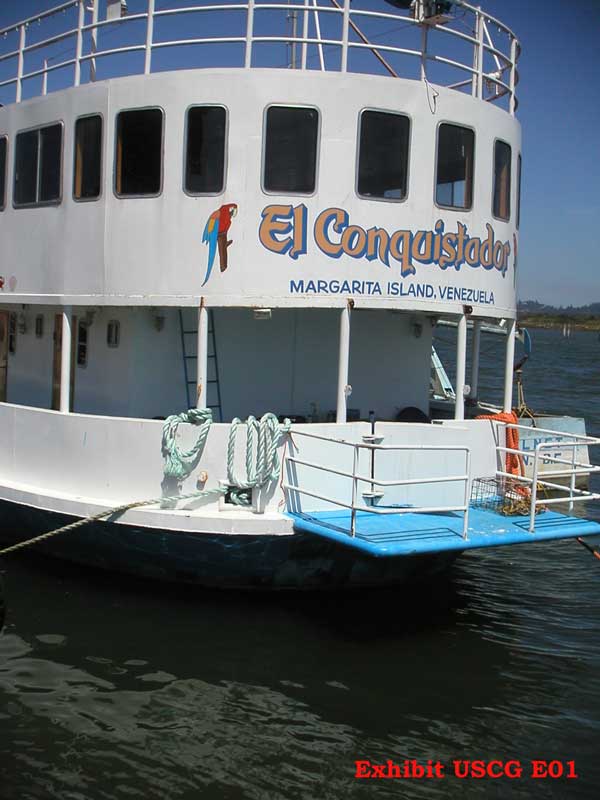
During the Provincial Court events that followed, I wrote two letters to the
Administrating Judge for the Provincial Courts of New Westminster, BC. The
letters are self-explanatory yet, the numerous exhibits and recorded witness
statements are omitted from these web pages. Needless to say this case in not
resolved as per the normal for Canada when Government officials and the Police
show criminal activity. Canadians continue to live under a state of corruption
where the majority offer praise to our police and Judiciary. Does criminal
evidence scare Canadians? I am assured it does, thus corruption continues.
The following quote, originates from my telephone conversation with
Mr. Bud Streeter, Director General, Marine Safety. Mr. Streeter was the Director
General, Marine Safety Canada, during the events involving the El Conquistador.
Needless to say, it is a very disturbing to know that the Canadian Government is
well aware of high level incompetency within its employees and does nothing to
rid of such filth.
"There is no doubt that marine safety is dysfunctional right now for
sure basically what you got is a whole bunch of regional directors that don’t
take any direction from Ottawa plus you don’t have any body in Ottawa that is
giving any direction".
"They are having their problems in marine safety they have problems
with enforcement they have problems with standards and they have problems with
personnel".
"I don’t think it is as simple as one person being incompetent it’s a
problem with the whole organization and I will be very honest after one trip to
the heart institute in the back of an ambulance, five years in marine safety was
enough for me. I had a heart attack in February 2002, and I took an opportunity
that was presented in May of 2002".
"And I am not surprised there has been a number of things particular in the west coast that have not made a lot of sense, the analogy that I heard used was the inmates are in charge of the asylum out there”.
Mr. Bud Streeter, Director General, Marine Safety Canada.
On March 16, 2006,
the Supreme Court of British Columbia granted a Judicial Review of the facts
involving the activities of the above-mentioned individuals, initiated by
Captain E. Gerardo da Costa Duarte private prosecution against RCMP Sgt. Mark G.
Peers formerly serving the RCMP West Coast Marine Detachment, Nanaimo, BC.
Subsequently, every Judge for the Provincial Courts of British Columbia refused
to hear the evidence, bringing shame and corruption to the Canadian Judicial
system.
Members of the public believing these issues don’t
involve them are living with their head buried in sand.
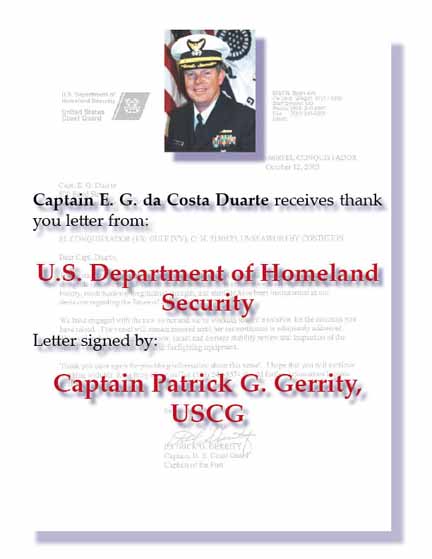
On October 12, 2005, I received a letter of "thank you"
from Captain Patrick G. Gerrity, Homeland Security, United States Coast Guard,
Captain of the Port. The letter references the U.S. detained vessel El
Conquistador (ex-Gulf Ivy) O.N. 5180520, unseaworthy condition. The said letter
is symbolic of a nation, Canada, that refuses to address incompetence and a
judicial system gone wrong.